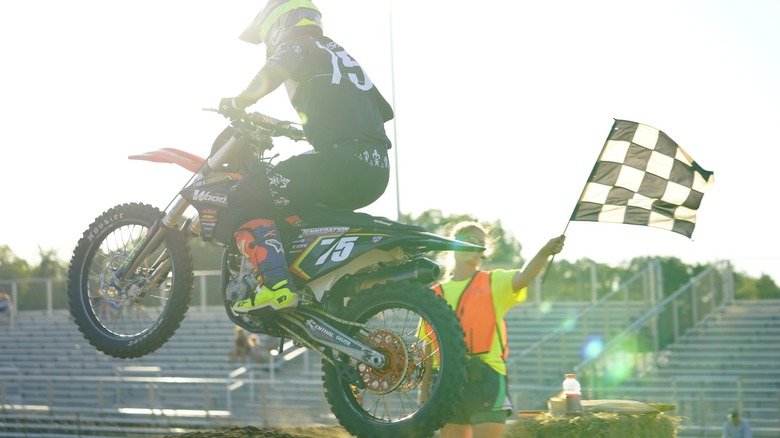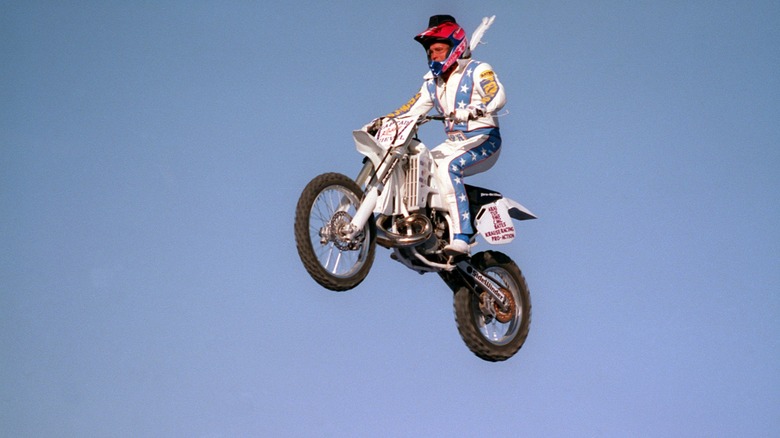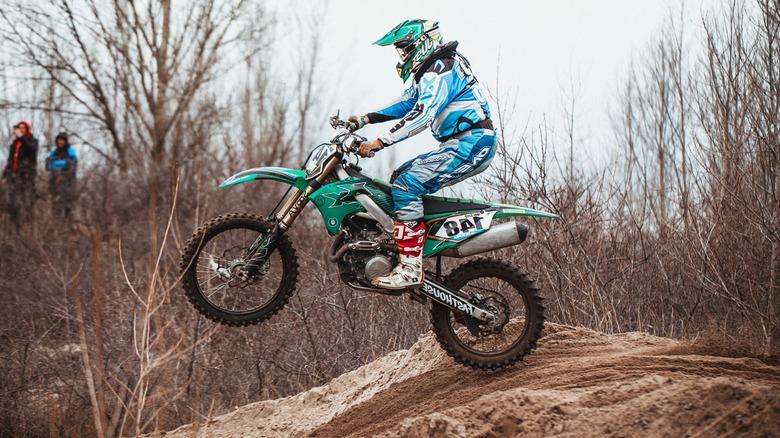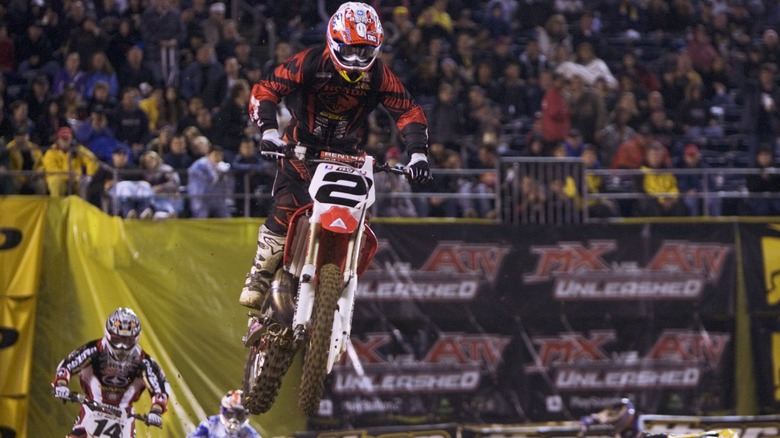2-Stroke Vs. 4-Stroke Dirt Bike: Which Is Faster?
Much like discussing religion and politics at a backyard BBQ, bringing up the debate of whether a 2-stroke dirt bike is faster than a 4-stroke is like asking if Ford is better than Chevy. Fortunately, this is a safe space where we can explore such questions without the passionate pleas of the faithful from either side.
Much like many questions in life, the answer to the "which dirt bike is faster" question requires some context. Are we talking about professional motocross and supercross racing bikes? Should we include hill-climb bikes? For the sake of clarity, we'll focus our discussion on publicly available models from recognizable dirt bike brands.
There seems to be a simple answer in an apples-to-apples comparison since almost every motocross racing sanctioning body pits smaller displacement two-strokes against four-strokes nearly twice their size. Given that disparity, it would appear that two-strokes are faster than four-strokes of equal displacement. While that might have been the case when the rules were written 20 years ago, is it still true?
What are the fastest 2-stroke dirt bikes
While you may run across larger displacement two-stroke dirt bikes, models topping out at 500cc are more common. Honda's CR500, trusted by daredevil Robbie Knievel for jumping the Grand Canyon, is a good example of a dirt bike dedicated to off-road use. For 2024, a few motorcycle manufacturers – Husqvarna, KTM, and Gasgas – offer two-stroke dirt bikes with up to 300cc displacements, while others, like Yamaha, stop at 250cc or less.
The first-generation Honda CR500, produced from 1984 to 1988, actually had a 491cc displacement. Other than the initial air-cooled version for the 1984 model, Honda opted for a liquid cooling system for 1985 and beyond. The most powerful CR500 models produced in 1985 and 1986, were as fast as most professional motocross race bikes of their time. However, the big two-stroke's sudden rush of power made it difficult to ride outside of racing applications. From 1985 to 1991, the CR500 had around 64 horsepower and a top speed of above 90 mph. In an attempt to make the big two-stroke more suitable for a wider consumer base, Honda detuned the engine to 56 horsepower in 1992 until CR500 production ended in 2001.
With most dirt bike makers limiting their two-stroke dirt bike offerings to 300cc or less, they're not quite as powerful as the Honda CR500. However, Husqvarna uses efficient electronic fuel injection (EFI) to replace old-school carburetion with selectable engine mapping for a choice between "linear, predictable power" and "more explosive power output" on its 300cc dirt bike. Dirt Rider found that a 2022 Husqvarna TE 300i made a maximum of 40 horsepower when tested on its in-house dyno.
How fast is a 4-stroke dirt bike?
Four-stroke dirt bikes used for motocross and supercross racing max out at 450cc. However, stepping outside of sanctioned racing events allows almost any displacement you could desire. While 650cc dual sport motorcycles can be ridden on dirt roads and trails, they're more comfortable on two-track roads crossing through forests, grasslands, or deserts than they are on a motocross track, enduro race, or running a hare scramble.
One of the fastest four-stroke dirt bikes, with estimated top speeds approaching 110 mph, comes from the Italian motorcycle company, Beta. The Beta 500 RS is technically a dual-sport bike, but it's closer to a dirt bike than other bikes splitting time between paved and unpaved surfaces.
The Beta 500 RS has a prominent dirt bike profile that's accentuated by a narrow seat and large hand guards designed to protect your fingers and knuckles from flying clumps of mud and rocks. Engine specs include its 477.5cc single-cylinder design with liquid cooling, fuel injection, and a 47-horsepower output.
Are 2-stroke dirt bikes faster than 4-strokes?
The four-stroke engine design used in dirt bikes, and found in nearly every other vehicle, has greatly benefited from the time and money devoted to its improvement. It's hard to say where two-stroke engine technology would be given the same focus, but despite being relegated to smaller displacement dirt bikes aimed at younger riders, they have improved over the years.
The question is, are two-stroke or four-stroke dirt bikes faster? It's evident that 450cc four-stroke dirt bikes are faster than 250cc two-strokes. If the 450 wasn't faster, professional motocross and supercross riders would be racing 250cc two-strokes. It's also clear that with equal displacements, the two-stroke is faster.
For example, the 1986 Honda CR500, with its 64-horsepower rating even in the absence of EFI and modern ignition systems, easily outperforms the Beta 500 RS with its 47 horsepower. If you're still not convinced, consider a Motocross Action Magazine comparison between Yamaha's YZ250 two-stroke with 46 horsepower and the 42 horsepower YZ250f four-stroke models, although the power gap is shrinking.
Ultimately, final gearing impacts top speed more than the minor horsepower disparity evident in either modern dirt bike version. Given the right ratio final drive, any 250-, 300-, 450-, or 500cc dirt bike could exceed 100 mph — making the large knobby tires' tenuous grip on whatever surface you're on seem insufficient.



